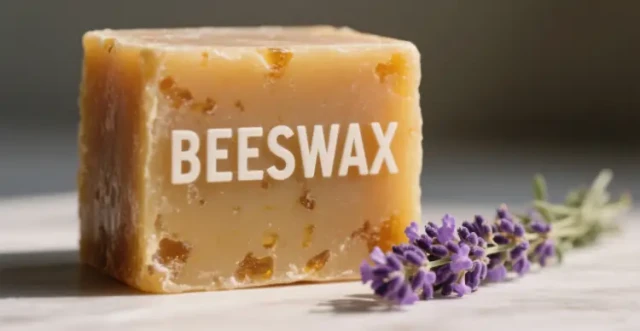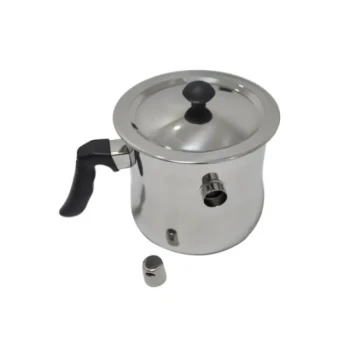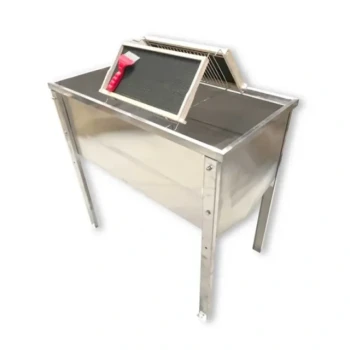For beekeepers seeking to maximize wax yield while maintaining purity, hot water extraction offers a reliable, chemical-free solution. This guide details why this method outperforms alternatives, provides step-by-step optimization techniques, and shares real-world applications for filtered beeswax.
Why Hot Water Extraction Outperforms Solar and Chemical Methods
Hot water extraction balances efficiency with wax integrity—unlike solar melting (weather-dependent) or chemical solvents (purity risks). Research shows it preserves wax’s natural aroma and color by operating within safe temperature thresholds (144–170°F/62–77°C), avoiding degradation seen at higher heats.
Key advantages:
- Higher yield: Up to 40% more recoverable wax vs. solar methods (see Case Study below)
- Purity control: No solvent residues; minimal protein contamination
- Scalability: Works for small batches or commercial operations
Step-by-Step Hot Water Extraction with Safety Enhancements
Materials Needed
- Stainless steel double boiler or dedicated wax melter
- Cheesecloth or polypropylene mesh bags (200+ micron)
- Food-grade thermometer
Optimized Process
- Prep combs: Freeze frames to kill pests, then crush combs to increase surface area.
- Controlled melting: Submerge crushed combs in a mesh bag, heating water to 150–160°F (65–71°C)—hot enough to melt wax but below discoloration thresholds.
- Filtration: Gently press the bag to release wax. Use a secondary filter (nylon stocking) to catch debris.
- Cooling: Let wax solidify atop water; impurities sink or adhere to the container’s sides.
Safety tip: Avoid overheating—monitor temperatures closely. Beeswax is flammable above 185°F (85°C).
Common Mistakes and Troubleshooting
Problem: Low Yield
- Cause: Inadequate comb crushing or fast cooling.
- Fix: Increase fragmentation; insulate the cooling container.
Problem: Discolored Wax
- Cause: Temperatures exceeding 170°F (77°C) or prolonged heating.
- Fix: Use a double boiler for even heat distribution.
Case Study: 40% Yield Increase
A commercial apiary upgraded to a two-stage filtration system (coarse mesh → fine nylon), reducing waste. Post-extraction, they achieved 1.4 lbs of wax per 10 frames vs. 1 lb previously.
Post-Extraction Applications of Filtered Beeswax
Pure beeswax from this method is ideal for:
- Cosmetics: Balms and lotions benefit from odorless, hypoallergenic wax.
- Candles: Slow-burning with minimal soot.
- Hive maintenance: Reused for foundation sheets.
Ready to upgrade your extraction setup? HONESTBEE’s commercial-grade melters and filters help beekeepers like you achieve higher yields with less waste. Explore our wholesale solutions today.
Ähnliche Produkte
- Beheizter Edelstahl-Honigtank Erwärmung Heiztank
- Elektrische Bienenwachsgrundierungsmaschine mit Arbeitsschale und Wachsgrundierungsrolle
- Elektrischer kommerzieller Bienenwachsschmelzer für den Fabrikgebrauch
- Vollautomatische Bienenwachs-Prägemaschine Foundation Mill
- Dampf Bienenwachsschmelzer Wachswärmer für Wachsverarbeitung
Ähnliche Artikel
- Wie man kristallisierten Honig sicher wiederherstellt, ohne Nährstoffe zu verlieren
- Wie man Honig natürlich erntet: Leitfaden für Imker zum Zerkleinern und Abseihen
- Wie die Blumenkomposition die Textur des Honigs formt: Kristallisation für perfekte Konsistenz
- Wie Propolis die Honigbienenvölker schützt: Antimikrobielle Wissenschaft und Anwendungen in der Imkerei
- Wie Honigheiztanks Qualität und Effizienz in der modernen Imkerei bewahren




















